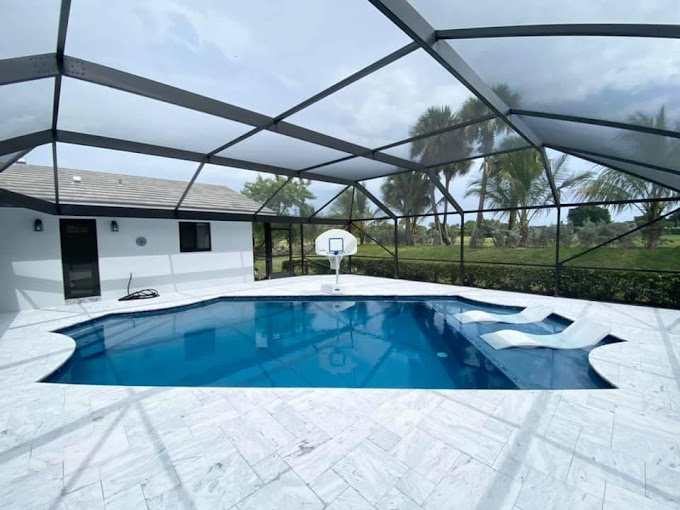Owning a swimming pool is a delightful luxury, but with it comes the responsibility of maintenance. Cracks in a pool can be a common issue, affecting both the aesthetics and structural integrity. In this comprehensive guide, we will walk you through a step-by-step process for assessing and repairing swimming pool cracks, ensuring the longevity and safety of your aquatic haven.
How to repair a crack in a swimming pool?
The initial inspection phase of swimming pool crack repair is a critical step that sets the foundation for the entire repair process. A meticulous examination of the pool’s surface and structure not only identifies the visible cracks but also provides insights into potential underlying issues. This also gives you an idea about Are pool cracks serious and need professional help or you can repair it yourself. Let’s delve into the significance of conducting a comprehensive initial inspection:
1. Understanding the Scope:
During the initial inspection, the goal is to understand the scope of the problem. By examining the entire pool surface, including the walls and floor, one can identify not only the visible cracks but also potential areas of concern that may not be immediately apparent.
2. Identification of Visible Cracks:
Visible cracks on the pool’s surface can range from superficial hairline fractures to more severe structural issues. The inspection process involves identifying the location, size, and direction of each crack, providing essential information for the subsequent repair plan.
3. Distinguishing Surface Cracks from Structural Issues:
Not all cracks are created equal. Some may be superficial, affecting only the cosmetic appearance of the pool, while others may extend into the structure, compromising its integrity. The initial inspection allows for the differentiation between surface cracks and deeper structural problems.
4. Safety Assessment:
Ensuring the safety of individuals involved in the repair process is a top priority. If the pool is operational during the inspection, precautions must be taken to prevent accidents. In cases where draining is necessary, safety measures are implemented to create a secure working environment.
5. Draining the Pool for a Thorough Evaluation:
For a more in-depth assessment, draining the pool to a level below the cracks is often necessary. This step provides a clearer view of the damaged areas, facilitating a more accurate analysis and subsequent repairs.
Types of Cracks
Before you begin for How do you fix a crack in a swimming pool? You need to understand the cracks. Cracks in swimming pools are not uncommon, and understanding the different types of cracks is crucial for effective diagnosis and subsequent repairs. Cracks can vary in severity, from surface-level blemishes to deeper structural issues. Let’s explore the two main types of cracks commonly found in swimming pools:
1. Surface Cracks:
Surface cracks are typically cosmetic in nature and are confined to the top layer of the pool. These cracks, often referred to as hairline cracks, are superficial and don’t extend beyond the surface finish. While they may not compromise the structural integrity of the pool, they can be unsightly and, if left unaddressed, may lead to more significant issues over time. Surface cracks can result from factors such as:
Causes of Surface Cracks:
Aging and Wear: Over time, exposure to the elements, harsh pool chemicals, and frequent use can contribute to the development of surface cracks.
Improper Mix of Pool Finish: In some cases, an improper mix or application of the pool finish can lead to the formation of surface cracks.
Repair of Surface Cracks:
Cosmetic Patching: Surface cracks can be addressed with cosmetic patching materials designed to match the pool finish. These patches improve aesthetics and prevent further water penetration.
2. Structural Cracks:
Structural cracks are more concerning as they penetrate deeper into the pool’s structure and may compromise its integrity. These cracks require a thorough assessment and often demand more extensive repair methods to ensure the pool’s stability. Understanding the causes and signs of structural cracks is essential for effective remediation.
Causes of Structural Cracks:
Ground Movement: Shifting soil, earthquakes, or ground settling can exert pressure on the pool structure, leading to structural cracks.
Poor Construction Practices: Inadequate construction practices, such as insufficient reinforcement or improper concrete curing, can contribute to the development of structural cracks.
Repair of Structural Cracks:
Epoxy Injection: This method involves injecting specialized underwater epoxy into the cracks to fill and seal them. Epoxy injection is effective for stabilizing structural cracks.
Reinforcement: In cases of extensive structural damage, additional reinforcement using materials like fiberglass may be necessary to restore the pool’s strength.
The Benefits of Hiring Experts for repairing swimming pool cracks
Maintaining a swimming pool requires diligence and expertise, especially when it comes to addressing issues like cracks. While DIY approaches may seem tempting, hiring experts for swimming pool crack assessment and repair brings numerous benefits that ensure the job is done efficiently and effectively. Let’s delve into the advantages of entrusting this task to professionals:
1. Accurate Assessment:
Experts possess the knowledge and experience to accurately assess the severity and extent of pool cracks. Their trained eyes can distinguish between surface cracks and structural issues, ensuring that the appropriate repair methods are employed.
2. Specialized Equipment:
Swimming pool contractors in Boca Raton are equipped with specialized tools and underwater cameras that allow for a thorough inspection of underwater cracks. This advanced equipment enables them to identify hidden problems and develop precise solutions.
3. Safety Measures:
Working on pool repairs involves inherent risks, especially when performed underwater. Professionals are well-versed in safety protocols and have the necessary equipment to mitigate risks, ensuring the well-being of both the workers and the pool users.
4. Efficient Repairs:
Experts streamline the repair process through their experience and familiarity with the latest technologies. Whether it’s injecting epoxy into structural cracks or applying underwater patches, professionals execute repairs efficiently, minimizing downtime for your pool.
5. Preventive Solutions:
Beyond fixing the immediate issue, experts can identify and address the root causes of pool cracks. By implementing preventive measures, such as soil stabilization or addressing structural weaknesses, they help prevent future problems, saving you time and money in the long run.
6. Use of High-Quality Materials:
Professionals have access to high-quality repair materials that may not be readily available to the general public. Using these materials ensures that the repairs are durable and long-lasting, providing a more robust solution to pool cracks.
7. Cost-Effective in the Long Run:
While hiring Swimming pool remodeling in Boca raton experts may incur an upfront cost, it proves cost-effective in the long run. Their accurate assessments and effective repairs reduce the likelihood of recurring issues, saving you from frequent repair expenses and potential extensive damages.
8. Insurance Coverage:
Reputable pool repair services typically carry insurance, providing added peace of mind. In the unlikely event of accidental damage during repairs, their insurance coverage can help cover the costs of any necessary additional repairs or replacements.
9. Compliance with Regulations:
Professional pool repair services are well-versed in local regulations and safety standards. Hiring experts ensures that the repairs not only meet but exceed these standards, keeping your pool in compliance and reducing the risk of legal issues.
10. Time Savings:
Time is of the essence when it comes to pool repairs. Professionals efficiently manage their time, completing repairs promptly and allowing you to enjoy your pool without prolonged disruptions.
Conclusion
Safeguarding the integrity of your swimming pool demands a meticulous approach to crack assessment and repair. The initial inspection serves as the cornerstone, allowing for accurate identification of surface and structural cracks. While surface cracks may be addressed with cosmetic patches, the more intricate structural cracks require professional expertise, often involving epoxy injections and reinforcement. Hiring repairing swimming pool cracks professionals ensures not only accurate assessments but also the use of high-quality materials and adherence to safety standards. Whether addressing cosmetic blemishes or structural concerns, a proactive stance towards pool maintenance guarantees not only an aesthetically pleasing pool but also a secure and enduring aquatic haven for relaxation and recreation.

